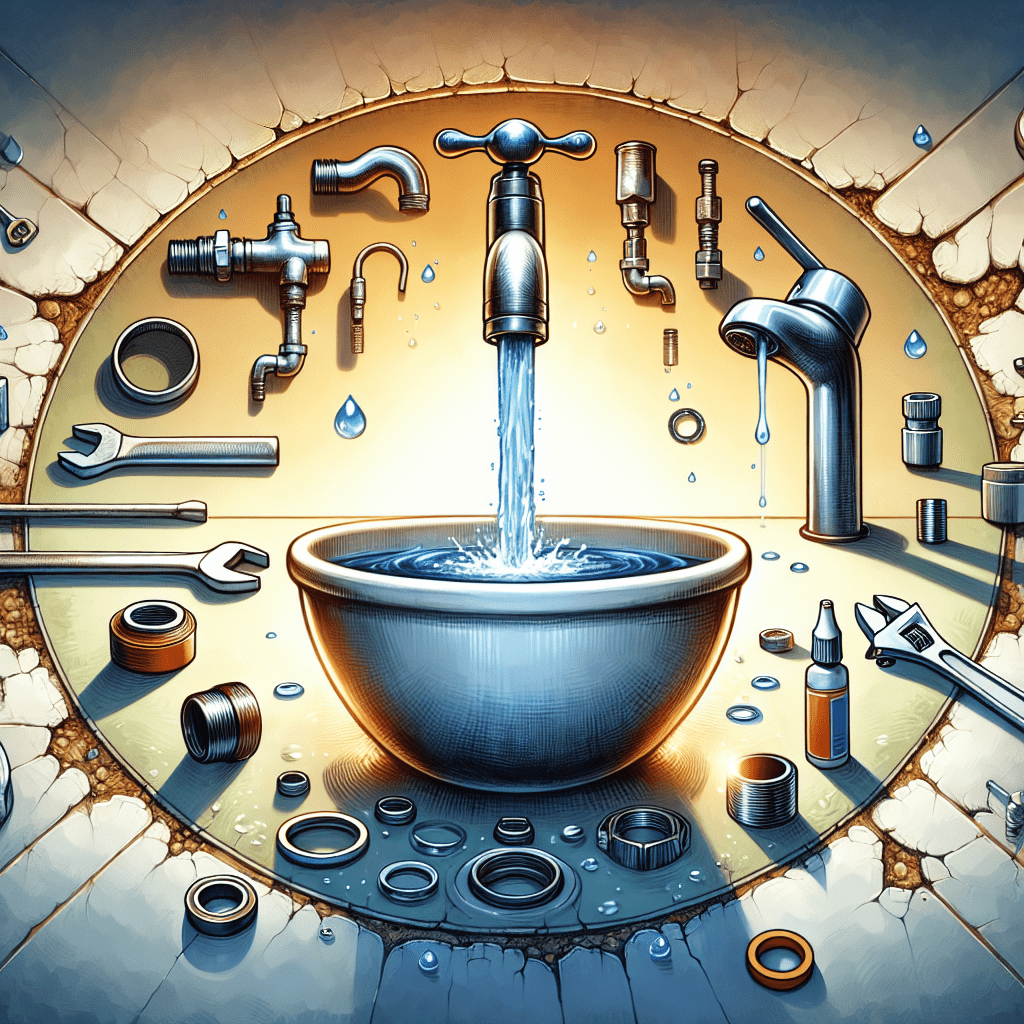Introduction
Faucets are an essential part of any home, providing water for drinking, cooking, cleaning, and bathing. However, like any plumbing fixture, faucets can develop problems over time that may require repair or replacement. In this article, we will discuss some common faucet problems and provide tips on how to fix them.
Common Faucet Problems
1. Dripping Faucet
One of the most common faucet problems is a dripping faucet. This can be caused by worn out washers, o-rings, or seals. To fix a dripping faucet, turn off the water supply, disassemble the faucet, and replace the worn out parts with new ones. Make sure to turn off the water supply before starting any repairs to avoid flooding.
2. Low Water Pressure
If your faucet has low water pressure, it may be due to a clogged aerator or a malfunctioning cartridge. Remove the aerator and clean it with vinegar to remove any mineral deposits. If the issue persists, you may need to replace the cartridge to restore proper water flow.
3. Leaking Handle
A leaking handle is usually caused by a loose screw or a worn out packing nut. Tighten the screw or replace the packing nut to stop the leak. Make sure to turn off the water supply before attempting any repairs to avoid further damage.
4. Noisy Faucet
If your faucet makes a loud noise when turned on or off, it may be due to a loose washer or a worn out valve. Tighten the washer or replace the valve to eliminate the noise. If the problem persists, you may need to call a professional plumber to inspect the faucet for further damage.
5. Rusty Faucet
If your faucet is rusting, it may be due to the buildup of mineral deposits or corrosion. Clean the faucet with a mixture of vinegar and baking soda to remove the rust. If the rust is extensive, you may need to replace the faucet to prevent further damage to your plumbing system.
How to Fix Common Faucet Problems
1. Gather Your Tools
Before starting any faucet repairs, gather all the necessary tools and materials, including a wrench, screwdriver, replacement parts, and plumber’s tape. Make sure to turn off the water supply before starting any repairs to avoid flooding.
2. Disassemble the Faucet
To fix a dripping faucet, start by turning off the water supply and disassembling the faucet. Remove the handle, spout, and other components to access the internal parts that may need repair or replacement.
3. Replace Worn Out Parts
Inspect the internal components of the faucet, such as washers, o-rings, seals, and cartridges, for signs of wear or damage. Replace any worn out parts with new ones to restore the faucet’s proper function.
4. Reassemble the Faucet
Once you have replaced the worn out parts, reassemble the faucet in the reverse order of disassembly. Make sure to tighten all the screws and connections properly to prevent leaks or other issues.
5. Test the Faucet
Turn on the water supply and test the faucet to ensure that it is functioning properly. Check for leaks, low water pressure, or other issues that may require further adjustments or repairs.
Conclusion
By following these tips, you can easily fix common faucet problems and avoid costly repairs or replacements. Remember to turn off the water supply before starting any repairs and consult a professional plumber if you are unsure about any aspect of the repair process. With proper maintenance, your faucets will continue to provide clean and reliable water for years to come.
FAQs
Q: Can I fix a leaking faucet myself?
A: Yes, you can fix a leaking faucet yourself by following the steps outlined in this article. However, if you are unsure about any aspect of the repair process, it is always best to consult a professional plumber for assistance.
Q: How do I prevent faucet problems in the future?
A: To prevent faucet problems in the future, regularly clean and maintain your faucets, check for leaks or other issues, and replace worn out parts as needed. In addition, avoid using harsh chemicals or abrasive cleaners that may damage the faucet’s finish or internal components.
Q: When should I call a professional plumber for faucet repairs?
A: If you are unable to fix a faucet problem on your own, or if the issue persists despite your best efforts, it is best to call a professional plumber for assistance. They have the tools, knowledge, and experience to diagnose and repair any plumbing issue quickly and effectively.
TIP:
Regularly inspect and maintain your faucets to prevent common problems from occurring. Clean the aerators, check for leaks, and replace worn out parts as needed to keep your faucets in good working condition.
#Common #Faucet #Problems #Fix

